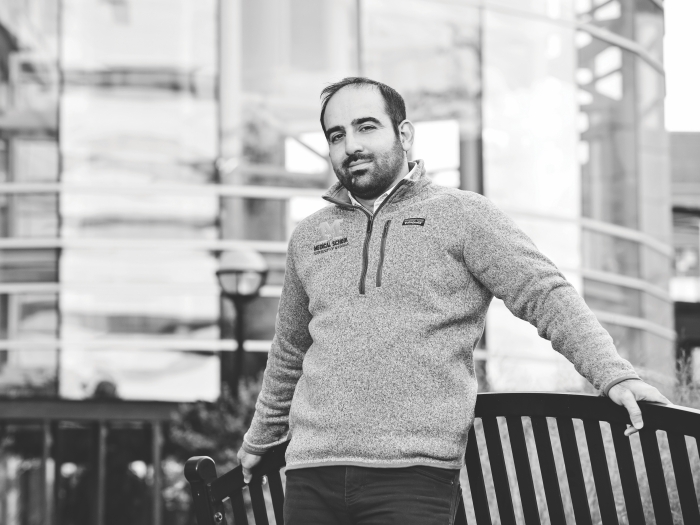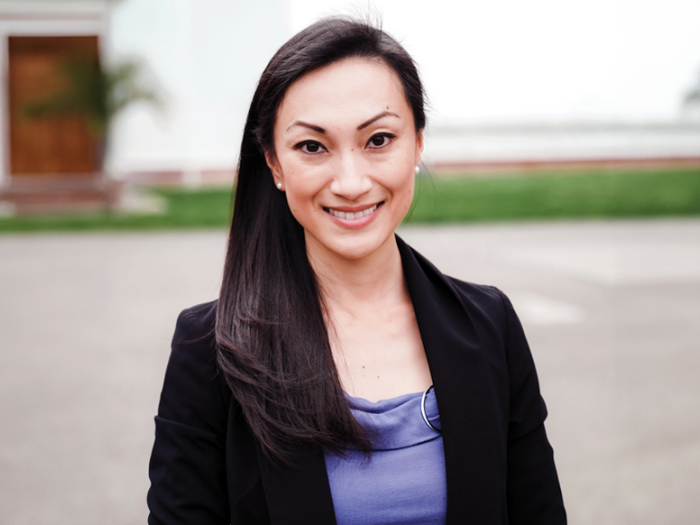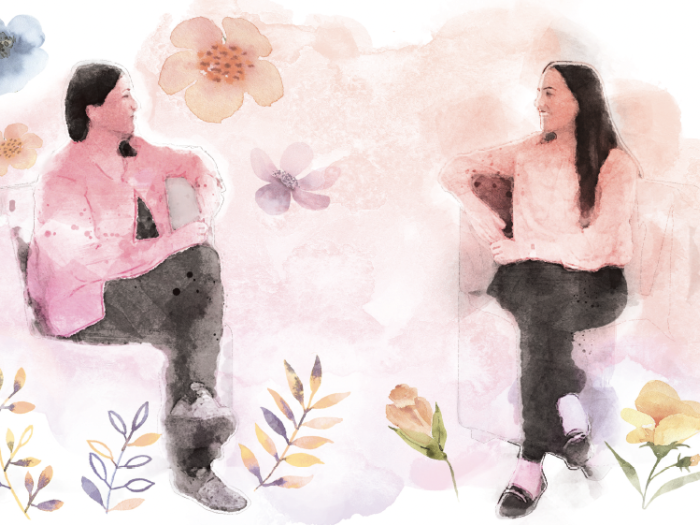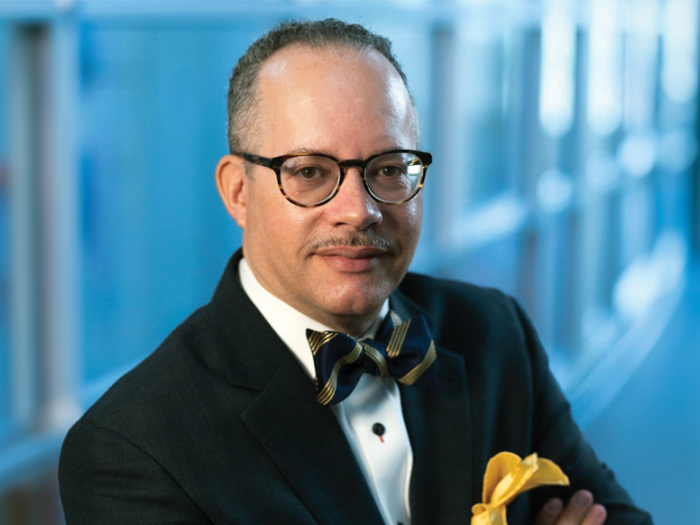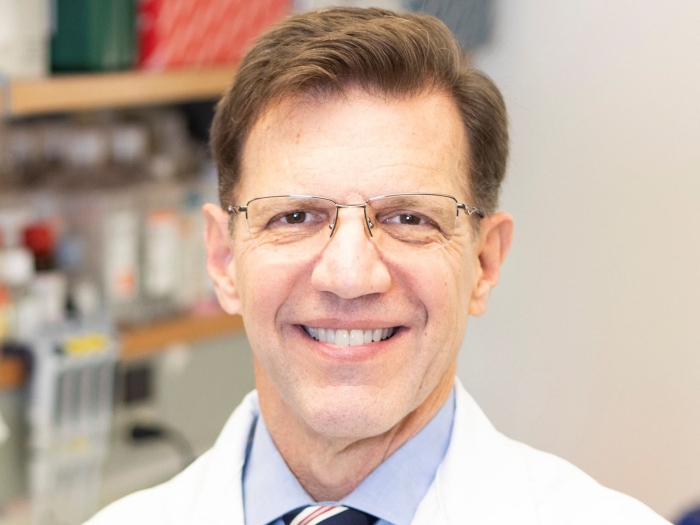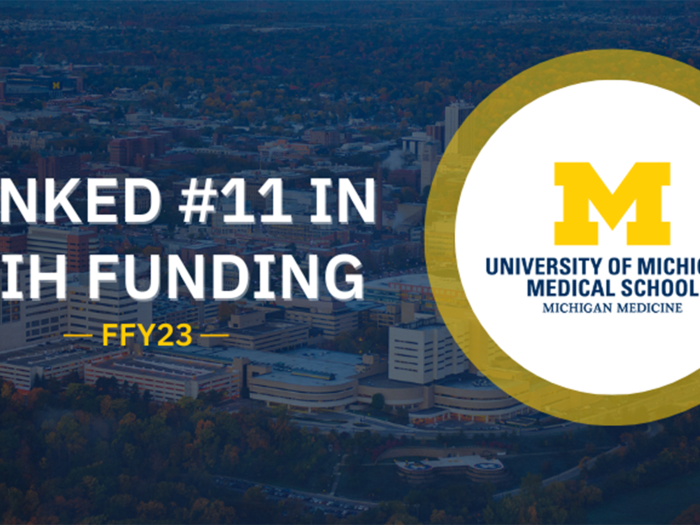Health Equity Scholars Are Learning an Unprecedented Depth of Patient Care
Authors |

Marcia Perry, M.D., knew it was important for the U-M Medical School to prioritize health equity. But she also worried that a health equity class would only comprise students from underrepresented backgrounds. "I don't want the burden to continue to be on the African American and Latino community to point out the disparities and do something about it."
But after talking with many incoming students during recruitment season last year, she realized that something had shifted. More voices would be part of the conversation — and part of the process of addressing inequities in health care. "I saw how much interest there is for this work. I was surprised by the number of non-minority students who are very interested."
At the time, Perry, who is an assistant professor of emergency medicine and director of house officer programs for the Office for Health Equity and Inclusion, was preparing to help lead the Health Equity Scholars Program (HESP), a curriculum designed to cover social determinants of health, institutional racism, and quality improvement techniques to evaluate health care inequities and devise interventions. The scholars are residents and fellows drawn from nearly every department, and Perry has been pleased with the broad participation. "This program is a very diverse group. … It's not the Black residents, or the Latino residents; it's everyone."
"This is really exciting, because we're one of the first institutions to do this," says David Brown, M.D., associate professor of otolaryngology-head and neck surgery as well as associate vice president and associate dean for health equity and inclusion. Michigan Medicine is one of nine institutions that are rolling out health disparities curricula to address a deficit noticed by the Accreditation Council for Graduate Medical Education. Over 18 months, a team at Michigan Medicine worked on the curriculum for the HESP.
By all accounts, this year's pilot program has been really well received (see "Health Equity Scholars Talk About Respect and Responsibility"). Scholars are learning a deeper level of compassionate care than has ever been offered before. In addition to monthly sessions, where speakers talk on a broad range of topics related to health equity and social determinants of health, the program also includes quality improvement (QI) research, with each scholar completing a QI project in the process.
We attended a HESP session in the spring. Here are just a few of the eye-opening things we learned.
Should Health Care Providers Take a Spiritual History?
"Religion is a very under-recognized social determinant of health," says Kristin Collier, M.D., who spoke at an HESP session on the importance of taking a spiritual history alongside the standard health history. "We have to see patients as whole people when they come to us — people who have meaning in their lives, people who have very deeply held commitments, sometimes religious commitments. If we do not include that in their care plan … [it] is going to be impoverished."
Collier, director of the health, spirituality, and religion program in the Medical School, and LJ Brazier, M.Div., a chaplain in Spiritual Care, define spirituality as all the ways we make meaning in our lives and the ways we feel connected to others. It is a set of beliefs and values that we use to interpret the world.
"When those beliefs and values are incongruent with our environment, it causes a ton of stress," says Brazier. "It can come out as depression, anxiety, fluctuations and frequencies of pain and nausea.
"The patient is already naked, sick, and vulnerable. They don't want to talk to you about deep-seated values," Brazier says. "The good news is that you, as a physician, are in a position of power. One of the ways you can set the tone is by being a model." During the session, Brazier and Collier discussed the FICA tool for taking a spiritual history. An acronym for faith, importance, community, and address, FICA arms the provider with a vocabulary to help guide conversations about how faith, beliefs, and values intersect with health care and how patients get support in their everyday lives.
One question Brazier gets a lot is, "What should you do if a patient asks you to pray with them?" She says, "If someone asks you for prayer, they are saying they trust you." If you're someone who prays, Brazier says it would be appropriate to pray with the patient. If not, there are still ways you can honor the trust that underlies the question.
Brazier believes it's important to be honest in that moment, as a way to reciprocate the trust and vulnerability the patient has expressed, and recommends saying something like:
- "Thank you for asking me. I feel that trust, and I will not take that lightly. I'm going to continue to do the absolute best to take care of you."
- "Prayer is not a vocabulary I have. Can I be here with you while you lead us in prayer?"
"There are lots of reasons we give ourselves not to have these conversations," said Brazier. "'It is a half hour conversation that I didn't schedule.' 'This person is going to bring up something that will make me uncomfortable.' So we really want … to chip away at those internal barriers."
Deaf, deaf, or hard of hearing?
How do you know if a patient is hard of hearing? Statistics show that many health care providers probably don't. Michael McKee, M.D., MPH, says patients are unlikely to bring it up if a provider doesn't ask. "People feel uncomfortable disclosing it," says McKee, who was born deaf. "I felt like I needed to hide it growing up. That's a very common phenomenon we see in older adults."
McKee is an associate professor of family medicine and of physical medicine and rehabilitation, director of MDisability, and co-director of the U-M Center for Disability Health and Wellness. At the Health Equity Scholars meeting in March, McKee outlined different types of hearing loss, the importance of diagnosing them, and what providers can do to take better care of patients who are hard of hearing.
People with untreated hearing loss have 46% higher health care costs, compared to those without hearing loss, says McKee. But in order for health care providers to treat hearing issues, they need to know the difference between Deaf, deaf, and hard of hearing. (McKee encourages the scholars to move away from using "hearing impaired," because of its negative connotations. He says "hard of hearing" and "hearing loss" are more acceptable phrases.)
Patients who are Deaf with a capital D, "identify hearing loss from a cultural lens," says McKee. "They often sign and interact with people like them and go to Deaf schools." Deaf people "are often not looking at addressing a deficit or fixing the ear."
Hard of hearing and deaf patients are not easily distinguishable, and their hearing loss exists on a spectrum. For those folks, hearing screenings are vital, and hearing aids may be necessary. McKee talks with the scholars about how to get sign language interpreters and the importance, especially since the beginning of the pandemic, of using clear face masks to accommodate lip readers.
A hearing loss is not the only challenge facing patients who are Deaf and those who are hard of hearing. McKee says it's also important to understand that they may not be able to give health care providers an accurate family medical history, since that kind of information is often shared orally and informally.
McKee shows Susan Dupor's 1991 painting Family Dog to illustrate this point. Dupor's painting depicts a deaf girl sprawled on a living room floor, with her tongue hanging out like a dog, while adults sit above her on a couch, their faces a blur as they converse unintelligibly. On her website, the artist, who is Deaf, says of the painting: "Deaf children of hearing families can feel very lost and alone if there aren't strong and positive communication methods taking place within the family."
How to Know If Your Patient Is a Victim of Human Trafficking
Note: This section mentions sexual violence and other abuse.
Despite the name, human trafficking — both sex and labor trafficking — does not require movement or crossing borders, says Natalja Rosculet, M.D., an emergency medicine resident who presented at the HESP meeting we attended. Instead, it's about exploitation.
"It's hard to identify, extremely subtle, and it can be pretty uncomfortable to delve into … because if you're wrong, it can feel uncomfortable and strange to ask these questions."
But there are some red flags health care providers can look for before asking questions. Rosculet details a long list of signals, from subtle things like a companion who refuses to leave the patient alone with a health care provider to the more obvious signs of abuse that might be revealed in a physical exam (evidence of rape, battering, or malnutrition).
Some red flags are less intuitive, such as working in a nail salon, having the same address for work and home, or having tattooed initials (which are sometimes a sign of ownership). Rosculet says providers should also be aware of severe injuries or advanced illness. "If you see a 19-year-old with a wrist fracture that seems three weeks old, or if someone has had UTI for weeks, that would also be problematic."
If a provider notices red flags, they should separate the patient from visitors and have a private conversation, but that can be tricky. Providers can call in an attending physician for help, or, as Perry said in the meeting, "get creative." She says she has used ultrasound or X-ray as an excuse to get a patient alone, explaining to the companion that they aren't allowed in the room for those procedures. Rosculet also advises providers in the emergency department to ask a social work colleague for help.
Although the provider should do a thorough physical exam and ask screening questions, "the most important thing is not to pressure them," says Rosculet. If patients aren't ready to get help, providers should make them aware of resources and offer to schedule a follow-up appointment. "Many require multiple visits to make up their mind that they're ready." The best thing providers can do is give them "another chance to engage with the health care system."
Cultural Humility
Despite the dizzying array of topics covered at the HESP session we attended, the evening stayed grounded in a concept that is key to the program and to the pursuit of health equity: cultural humility. Physicians will encounter patients with vastly different life experiences, religions, disabilities, races, and other cultural identifications. Cultural humility is the idea that a physician can't assume where a patient is coming from, and in order to give that patient the best care possible, the physician needs to set aside their own assumptions and biases and have open-ended conversations with the patient.
It's one part of the program that has been especially salient for David Brown. He is not only helping to lead the HESP but also learning alongside the scholars, who are required to write "cultural humility" reflections after each session.
As an example, Brown shares a story about a moment of cultural humility from his own practice. He noticed a patient of his had missed several appointments, but was showing up in the emergency department. Once upon a time, it might have been his instinct to label her as "non-compliant." But this time, he decided to ask her what was going on. "She said, 'Dr. Brown, I work at Burger King, and in order to come see you, I have to take two buses. I miss a whole day of work, and I don't get paid. And sometimes it's easier for me to take my daughter to the emergency department at night or on weekends, when I don't have to work,'" Brown recalls.
Her behavior now made sense, and he was able to offer her more compassionate care. He could arrange a social work consult to help her get a taxi to appointments, and he could make sure they were scheduling visits that did not conflict with her work schedule. "These days, if it's possible, we could do a video visit," he says. "[Cultural humility] allows us to explore opportunities to get around the barriers."
Health Equity Scholars Talk About Respect and Responsibility
- "I wish everyone could get exposure to this," says Kayla Phelps, M.D., a fellow in pediatrics. "A lot of people in health care, especially busy physicians pursuing high-achieving careers, see this stuff as 'soft topics,' 'additional,' or not the most important to know … [but] all of these topics are important for anyone. If you're working with people, you should be aware of needs that different populations face."
- "I thought I was 'diverse' and 'open minded,'" says Justin Kelley, M.D., MPH, a house officer in pathology who has done work on LGBTQ+ health issues and is openly gay. "With each session, I'm like, 'Oh! I didn't quite understand that. I had bias that I didn't realize. I never appreciated that I may, for example, have privilege. You 'know' it, but you don't realize it. [The HESP] has changed the way I think about health, health care, and patients."
- "I don't think we ask enough about social determinants of health and how they're affecting our patients," says Preeta Gupta, M.D., a neurology resident. "That's crucial for us, as neurologists in particular. Are we really capturing the patient experience and what their condition means to them in their life?" HESP has taught Gupta to ask more open-ended questions. Instead of asking directly about finances or housing, Gupta asks them, "'Are you having any trouble getting your medicine?' They might say, 'No, I can't get a ride,' 'I can't afford gas,' or 'I can't get out of my house.' I'm actually learning so much more about my patients."
- "The beautiful thing about medicine is no one is exempt from it," says Versha Pleasant, M.D., MPH (Residency 2020), a cancer genetics and breast health fellow. "No matter what your race, socioeconomic status, sexual orientation — everyone's life intersects with medicine at some point. That puts us in a unique position with an incredible amount of responsibility to understand how to care for people coming from all different perspectives. In a way, it can feel overwhelming, but this is the reality of practicing medicine. You're going to see everyone from all walks of life, and you have to appreciate that, honor that responsibility that you have, and find ways to best care for them."
